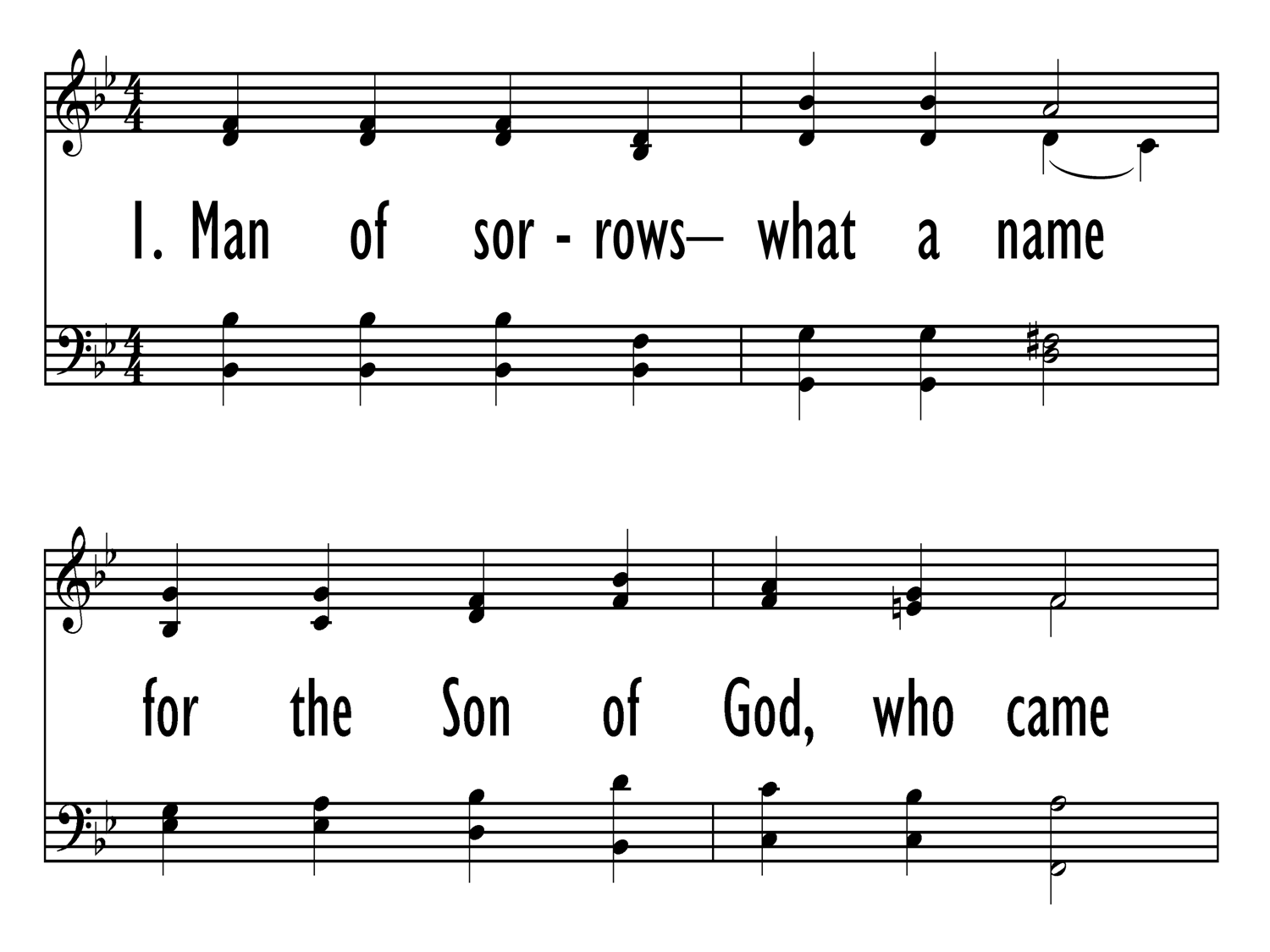- |
User Links
Man of Sorrows--What a Name
Hymn Information
- First Line
- Man of sorrows--what a name
- Author
- Philip P. Bliss (1875, alt.)
- Tune Name
- HALLELUJAH! WHAT A SAVIOR
- Composer
- Philip P. Bliss (1875, alt.)
- Topic
- Church Year: Good Friday · Jesus Christ: Atonement · Jesus Christ: Lamb · Jesus Christ: Savior · Jesus Christ: Son of God · New Heaven and Earth
Copyright Information
- Text Copyright
- Public Domain
- Tune Copyright
- Public Domain
- Reprint/Projection Information
- Words and Music: The Words and Music are in the Public Domain; you do not need permission to project or reprint the Words and Music.
Full Text
Scripture References
Further Reflections on Scripture References
"Man of Sorrows" is a reference to the prophet Isaiah's depiction of the "suffering servant" (Isa. 52: 13-53: 12). The full text draws on that prophetic vision and on the gospel narratives of Christ's crucifixion and atoning death. While much of the text affirms objectively the redemptive work of Christ, stanza 2 makes a very personal confession (like 386): "in my place condemned he stood, sealed my pardon with his blood." Stanzas 4 and 5 move from Christ's death to his exaltation at the right hand of God and to his return as "glorious King." Each stanza concludes with an "alleluia" to so great a Savior.
Psalter Hymnal Handbook
Confessions and Statements of Faith References
Further Reflections on Confessions and Statements of Faith References
This song reflects the narrative of the suffering and death of Christ on Calvary, events whose significance and purpose is deepened by the confessions of the church. Heidelberg Catechism, Lord’s Days 15-16, Questions and Answers 37-44 explain the significance of each step of his suffering. Question and Answer 40 testifies that Christ had to suffer death “because God’s justice and truth require it; nothing else could pay for our sins except the death of the son of God.”
The Belgic Confession, Article 20 professes that “God made known his justice toward his Son…poured out his goodness and mercy on us…giving to us his Son to die, by a most perfect love, and raising him to life for our justification, in order that by him we might have immortality and eternal life.”
Consider also the testimony of Belgic Confession, Article 21: “He endured all this for the forgiveness of our sins.”
Man of Sorrows--What a Name
Call to Worship
Confession
Assurance
Additional Prayers
Man of Sorrows--What a Name
Tune Information
- Name
- HALLELUJAH! WHAT A SAVIOR
- Key
- B♭ Major
- Meter
- 7.7.7.8


 My Starred Hymns
My Starred Hymns




